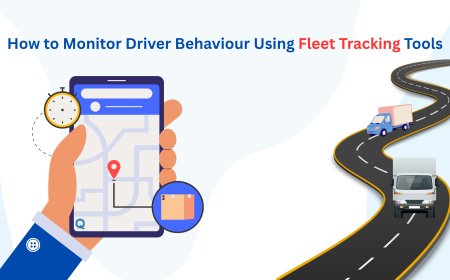Top Loan Management Software for Streamlined Lending
One of the most powerful tools enabling this shift is loan management software. Whether you're a traditional bank, fintech company, NBFC, or microfinance institution, investing in the right software can significantly optimize your loan servicing operations.

In an era where digital transformation is reshaping the financial services industry, lenders are under increasing pressure to streamline operations, reduce costs, and enhance customer satisfaction. One of the most powerful tools enabling this shift is loan management software. Whether you're a traditional bank, fintech company, NBFC, or microfinance institution, investing in the right software can significantly optimize your loan servicing operations.
From origination and disbursement to repayment tracking and delinquency management, loan management systems simplify complex processes, automate repetitive tasks, and ensure compliance with regulatory standards. As the lending landscape grows more competitive, embracing modern technology becomes critical to maintaining efficiency and profitability.
What Is Loan Management Software?
Loan management software is a digital platform that automates and manages the entire lifecycle of a loan. It handles everything from application processing, borrower onboarding, credit checks, disbursal, EMI calculation, interest accrual, to tracking repayments, and handling defaults.
These platforms are typically cloud-based, mobile-friendly, and capable of integrating with other systems like Core Banking, CRM, KYC tools, and credit bureaus. With smart workflows and automated alerts, lenders can minimize manual errors, cut operational costs, and serve customers faster.
Key Features of Effective Loan Management Software
A robust loan management system brings together multiple tools under one roof to support lenders and their customers. Key features include:
1. Loan Origination Module
Digitizes the loan application process, performs automatic eligibility checks, and manages document uploads and credit scoring.
2. Loan Disbursement Engine
Enables secure, real-time fund transfers directly into borrower accounts through bank APIs or payment gateways.
3. Repayment Tracking
Automates EMI schedules, generates reminders, and processes repayments through UPI, NEFT, or auto-debit systems.
4. Delinquency Management
Flags overdue loans, triggers collection workflows, and supports follow-ups via SMS, email, or IVR.
5. Customizable Loan Products
Supports a range of loan typespersonal, home, vehicle, education, and MSMEcustomized to business needs.
6. Reporting & Analytics
Provides dashboards and reports on loan performance, borrower behavior, portfolio health, and risk levels.
7. Regulatory Compliance
Supports KYC, AML checks, and automated data logging to comply with regional and global financial regulations.
Why Financial Institutions Need Loan Management Software
Managing loans manually or with outdated systems creates room for inefficiency, errors, and compliance risks. As a result, modern loan management software is now essential for lenders of all sizes.
Financial Institutions such as banks, NBFCs, and credit unions rely on loan software to reduce human intervention, ensure real-time tracking, and deliver better service. These systems eliminate bottlenecks, provide transparency, and ensure the smooth handling of high loan volumesespecially crucial in today's digital-first economy.
Benefits of Using Loan Management Software
1. Increased Operational Efficiency
Automates repetitive processes and reduces the workload on employees.
2. Faster Disbursals
Accelerates loan approvals and disbursals through automated workflows and digital verifications.
3. Improved Customer Experience
Provides digital onboarding, instant notifications, self-service portals, and transparent repayment tracking.
4. Risk Mitigation
Advanced analytics and credit scoring tools help assess borrower risk and prevent loan defaults.
5. Scalability
Supports growing portfolios and expanding customer bases without overhauling the entire system.
6. Cost Reduction
Reduces overheads by automating manual processes and minimizing the need for physical branches or large teams.
Top Use Cases of Loan Management Software
The application of loan management software spans across various lending scenarios:
-
Retail Lending: For personal loans, consumer loans, and credit lines.
-
Microfinance: Supports group loans, recurring payment tracking, and field agent interfaces.
-
Corporate Lending: Helps manage large loan portfolios for SMEs and enterprises with complex underwriting.
-
Mortgage Management: Tracks long-term housing loans with detailed amortization schedules.
-
P2P Lending Platforms: Automates investor-borrower interactions, collections, and payouts.
How to Choose the Right Loan Management Software
Choosing the best loan software requires a thorough understanding of your lending needs. Here are some criteria to help guide your decision:
-
Customization: Can the platform be tailored to your loan products and compliance requirements?
-
Ease of Use: Is the user interface intuitive for both staff and customers?
-
Integration Capabilities: Does it sync with your CRM, accounting software, payment systems, and KYC tools?
-
Security: Are data encryption, user access control, and backup protocols in place?
-
Vendor Support: Is training and after-sales support readily available?
-
Scalability: Will the system grow with your business without major upgrades?
Integration with Third-Party Systems
To deliver a seamless loan servicing experience, leading loan management software platforms offer out-of-the-box integrations with:
-
Credit Bureaus (CIBIL, Experian, CRIF, etc.)
-
Payment Gateways (Razorpay, PayU, etc.)
-
KYC Verification Platforms (Digilocker, Aadhaar, PAN)
-
Core Banking Systems
-
Customer Support Systems (Freshdesk, Zendesk)
Such integration ensures real-time data exchange, reduces processing time, and enhances the borrowers journey.
Trends Driving Loan Software Adoption
Several trends are accelerating the adoption of loan management software in India and globally:
-
Digital Lending: Fintech companies are increasingly offering instant, digital-first loans.
-
Remote Onboarding: Video KYC and mobile onboarding make loan access faster and more inclusive.
-
AI and Machine Learning: Used for fraud detection, risk scoring, and portfolio optimization.
-
Mobile Apps for Borrowers: Enable loan tracking, EMI payments, and support from any device.
These innovations are making lending smarter, faster, and more customer-friendly.
Conclusion
A powerful loan management software solution is indispensable for lenders aiming to stay relevant in a competitive, technology-driven marketplace. It not only simplifies loan servicing and improves internal efficiency but also empowers customers with faster, more transparent, and accessible lending services.
Whether you're a growing NBFC, a microfinance institution, or a large-scale bank, adopting the right software will ensure that your loan operations are future-ready, compliant, and scalable.





















![Top 11 Real Estate Mobile App Developers in Riyadh, Saudi Arabia [2025 Edition]](https://www.philadelphialivenews.com/uploads/images/202506/image_430x256_68621a9e48997.jpg)






















![Top 11 Real Estate Mobile App Developers in Riyadh, Saudi Arabia [2025 Edition]](https://www.philadelphialivenews.com/uploads/images/202506/image_140x98_68621a9e4a204.jpg)